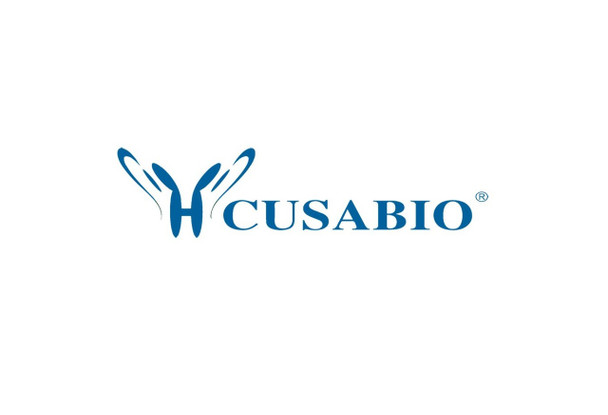Cusabio Rattus norvegicus Recombinants
Recombinant Rat High mobility group protein B1 (Hmgb1) | CSB-YP010553RA
- SKU:
- CSB-YP010553RA
- Availability:
- 25 - 35 Working Days
Description
Recombinant Rat High mobility group protein B1 (Hmgb1) | CSB-YP010553RA | Cusabio
Alternative Name(s): Amphoterin (Heparin-binding protein p30) (High mobility group protein 1) (HMG-1) (Hmg-1) (Hmg1)
Gene Names: Hmgb1
Research Areas: Epigenetics and Nuclear Signaling
Organism: Rattus norvegicus (Rat)
AA Sequence: GKGDPKKPRGKMSSYAFFVQTCREEHKKKHPDASVNFSEFSKKCSERWKTMSAKEKGKFEDMAKADKARYEREMKTYIPPKGETKKKFKDPNAPKRPPSAFFLFCSEYRPKIKGEHPGLSIGDVAKKLGEMWNNTAADDKQPYEKKAAKLKEKYEKDIAAYRAKGKPDAAKKGVVKAEKSKKKKEEEDDEEDEEDEEEEEEEEDEDEEEDDDDE
Source: Yeast
Tag Info: N-terminal 6xHis-tagged
Expression Region: 2-215aa
Sequence Info: Full Length of Mature Protein
MW: 26.8
Purity: Greater than 85% as determined by SDS-PAGE.
Relevance: Multifunctional redox sensitive protein with various roles in different cellular compartments. In the nucleus is one of the major chromatin-associated non-histone proteins and acts as a DNA chaperone involved in replication, transcription, chromatin remodeling, V(D)J recombination, DNA repair and genome stability. Proposed to be an universal biosensor for nucleic acids. Promotes host inflammatory response to sterile and infectious signals and is involved in the coordination and integration of innate and adaptive immune responses. In the cytoplasm functions as sensor and/or chaperone for immunogenic nucleic acids implicating the activation of TLR9-mediated immune responses, and mediates autophagy. Acts as danger associated molecular pattern molecule that amplifies immune responses during tissue injury. Released to the extracellular environment can bind DNA, nucleosomes, IL-1 beta, CXCL12, AGER isoform 2/sRAGE, lipopolysaccharide (LPS) and lipoteichoic acid (LTA), and activates cells through engagement of multiple surface receptors. In the extracellular compartment fully reduced HMGB1 acts as a chemokine, disulfide HMGB1 as a cytokine, and sulfonyl HMGB1 promotes immunological tolerance . Has proangiogenic activity. May be involved in platelet activation. Binds to phosphatidylserine and phosphatidylethanolamide. Bound to RAGE mediates signaling for neuronal outgrowth. May play a role in accumulation of expanded polyglutamine proteins.
Reference: "HMG1 protein stimulates DNA end joining by promoting association of DNA molecules via their ends." Stros M., Cherny D., Jovin T.M. Eur. J. Biochem. 267:4088-4097(2000)
Storage: The shelf life is related to many factors, storage state, buffer ingredients, storage temperature and the stability of the protein itself. Generally, the shelf life of liquid form is 6 months at -20?/-80?. The shelf life of lyophilized form is 12 months at -20?/-80?.
Notes: Repeated freezing and thawing is not recommended. Store working aliquots at 4? for up to one week.
Function:
Involvement in disease:
Subcellular Location:
Protein Families:
Tissue Specificity:
Paythway:
Form: Liquid or Lyophilized powder
Buffer: If the delivery form is liquid, the default storage buffer is Tris/PBS-based buffer, 5%-50% glycerol. If the delivery form is lyophilized powder, the buffer before lyophilization is Tris/PBS-based buffer, 6% Trehalose, pH 8.0.
Reconstitution: We recommend that this vial be briefly centrifuged prior to opening to bring the contents to the bottom. Please reconstitute protein in deionized sterile water to a concentration of 0.1-1.0 mg/mL.We recommend to add 5-50% of glycerol (final concentration) and aliquot for long-term storage at -20?/-80?. Our default final concentration of glycerol is 50%. Customers could use it as reference.
Uniprot ID: P63159
HGNC Database Link: N/A
UniGene Database Link: N/A
KEGG Database Link: N/A
STRING Database Link: N/A
OMIM Database Link: N/A






